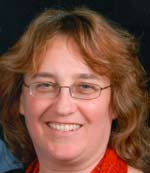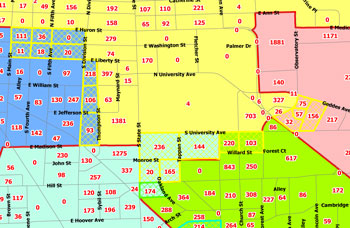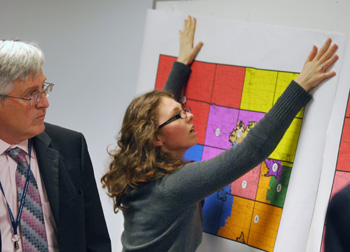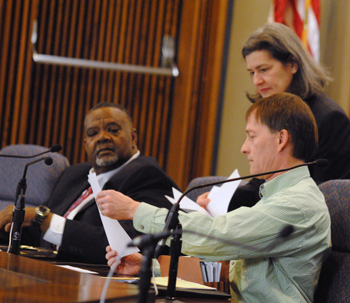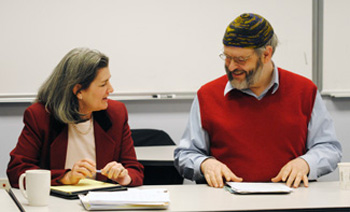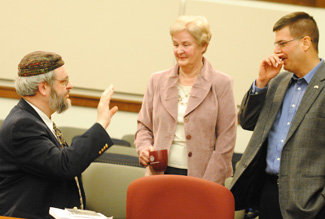In the District 2 race for Washtenaw County board of commissioners, Democrat Eric Borregard will be removed from the ballot in District 2, leaving Republican incumbent Dan Smith unchallenged by any partisan candidates in the primary and general elections.
The decision came after the state Bureau of Elections indicated late Friday afternoon that a determination made by county clerk Larry Kestenbaum earlier in the week was inappropriate. Ed Golembiewski, chief deputy county clerk and elections director, told The Chronicle on Saturday that Borregard had been apprised of the situation, and will be officially informed in writing on Monday, when his name will be removed from the list of candidates on the county’s election website.

Republican Dan Smith, shown here chairing the May 16 meeting of the Washtenaw County board's ways & means committee, represents District 2 on the board of commissioners. He will be the only candidate on the ballot in District 2 for the Aug. 7 primary. (Photo by the writer.)
Borregard, a Dexter resident, had originally filed to run in District 1, which is the current district in which he resides. However, because of redistricting that takes effect for the upcoming election, his home will be located in the new District 2. Shortly after the 4 p.m. filing deadline on Tuesday, May 15, the county clerk’s office was alerted to this error by Kent Martinez-Kratz, a Democrat who’s running in District 1 against incumbent Republican Rob Turner. Acting to correct what he deemed a clerical error, Kestenbaum, a Democrat, approved an amendment to Borregard’s paperwork to allow him to appear on the District 2 ballot.
On Friday afternoon at 2 p.m., Kestenbaum told The Chronicle that he had talked with the county’s corporation counsel [Curtis Hedger] earlier in the week, as well as to staff in the state Bureau of Elections, and that he was comfortable that the change was within his authority to make. He said it was important not to create barriers to running for office. “There’s no trickery here,” he said.
Later that afternoon, Secretary of State spokesman Fred Woodhams told The Chronicle that staff were reviewing the situation and would potentially weigh on in it early next week. The Bureau of Elections is a division of the office of Secretary of State, a position held by Republican Ruth Johnson.
But just a few minutes before 5 p.m. on Friday, an official from the Bureau of Elections contacted the county clerk’s office, according to Golembiewski. The state’s view is that it was not appropriate to accept changes to the filing after the 4 p.m. deadline. As a result, Borregard’s name will not appear on the ballot. Kestenbaum left town Friday afternoon to attend an out-of-state funeral over the weekend and could not be reached. Golembiewski said that Kestenbaum had previously indicated he would abide by the state Bureau of Elections decision.
Borregard, who ran for county commissioner in 2010 but was defeated in the Democratic primary, has the option of challenging the decision in court. He could also choose to run as an independent in the Nov. 6 general election – the filing deadline for candidates who are not affiliated with a political party is July 19 at 4 p.m.
In another county board race, two Ypsilanti Township candidates who had previously filed to run for the commissioner seat in District 5 – Rick Roe and Michael White – have withdrawn from that Aug. 7 primary race. The deadline to withdraw was 4 p.m. Friday, May 18. That leaves incumbent Democrat Rolland Sizemore Jr. unchallenged in the primary.
For a list of county candidates in the Aug. 7 primary election, see Chronicle coverage: “Last Minute Filings: Washtenaw County Races.” [Full Story]




